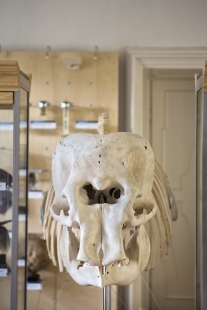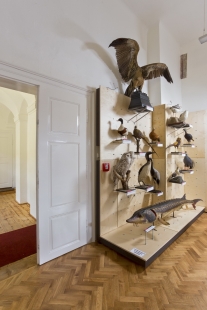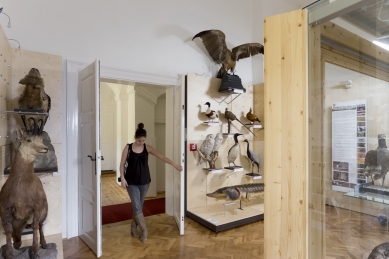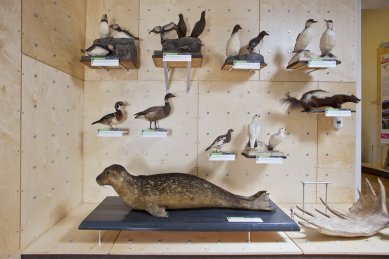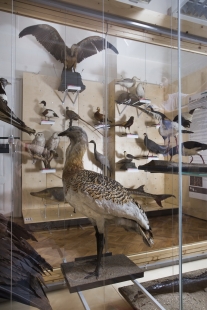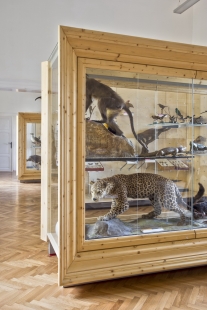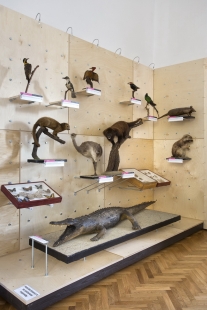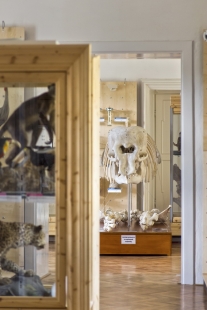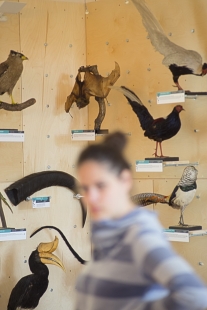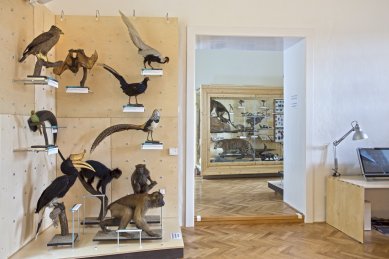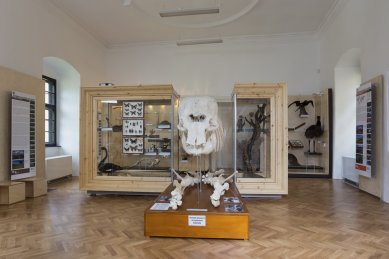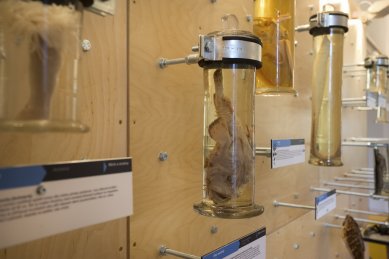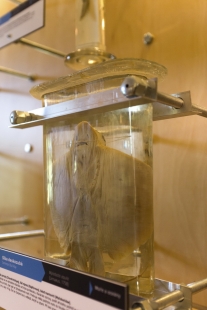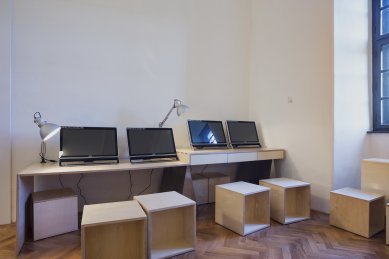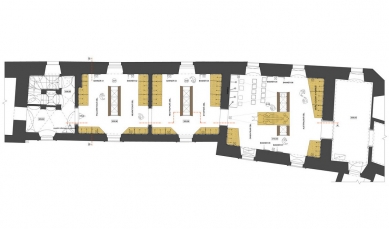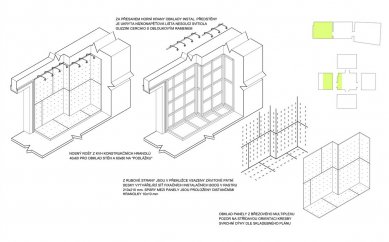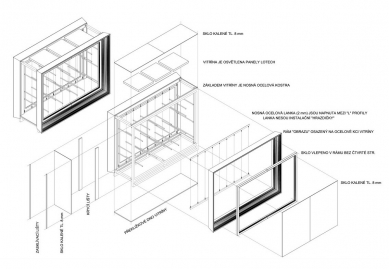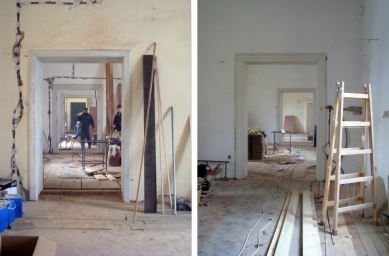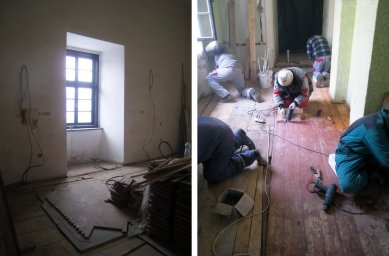
Animals on Earth and Humans
Zoological exhibition at Malenovice Castle

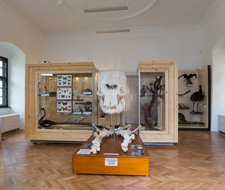 |
| photo: Libor Stavjaník (TOAST) |
Taxidermy is one of the distinct ways humans relate to animals. The architectural solution of the exhibition, as well as its narrative, respond to the bizarre nature of this phenomenon. Specific relationships between humans and terrestrial fauna (such as human-exterminator, human-collector, human-protector, etc.) thus form a supplementary narrative line of the exhibition as a whole organized according to zoogeographical areas. Both principles, zoogeographical and cultural anthropological, intertwine within the exhibition.
Three castle halls are dedicated to the exhibition. The architectural solution is based on two principles. Installation pre-walls around the halls with a dense grid of fixing points allow the exhibits to be composed directly into the space using standard hardware items. I deliberately wanted to avoid special design of the installation elements. Therefore, the installation arsenal includes standard screws, threaded rods, nuts, plumbing clamps, etc. I wanted this somewhat paradoxical situation, the certain rawness of the confrontation between exhibits taken from the depository and industrial elements that are wonderfully functional yet unexpected for the visitor, to encourage the viewer to contemplate what they are observing. I hoped that the content of the factual and didactically valuable exhibition would also, to a certain extent, reinterpret the former "cabinets of curiosities." The museum positively embraced the somewhat controversial intention in the museum context to offer most of the exhibits floating freely in the space to the visitors. Without the usual barrier of glass display cases. However, their alternative in the form of "display-case pictures" was also considered. The centerpiece of each hall is a large display case. Its massive frame, resembling the frame of an old painting, defines the scenery inside and also refers to the tradition of hunting still lifes, so characteristic of feudal residences, and is consistent with the bizarre corpse-like immobility of the "stuffed animals." The display cases touch the axis of the view through the exhibition halls. The view is concluded with a "point de vue" - a skeleton of an Indian elephant emerging from the last display. In the third hall, the educational line of the exhibition is expanded with a multimedia program. A quartet of touch screens allows for games with specially developed programs with varying degrees of difficulty for both children and adults. The hall also plans for the possibility of projecting additional thematic documentary programs.
The English translation is powered by AI tool. Switch to Czech to view the original text source.
12 comments
add comment
Subject
Author
Date
pocity
Kordula
17.10.13 01:43
http://www.archiweb.cz/buildings.php?&action=show&id=3896
Vladimir Bogdanov
17.10.13 10:05
http://www.archiweb.cz/buildings.php?&action=show&id=3896
Yadviga Yančevskaya
17.10.13 10:21
No nevím...
Winter
19.10.13 12:34
To Winter
Josef Čančík
19.10.13 08:03
show all comments


